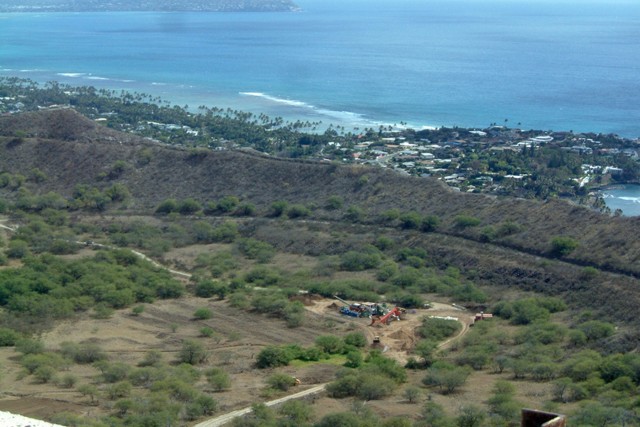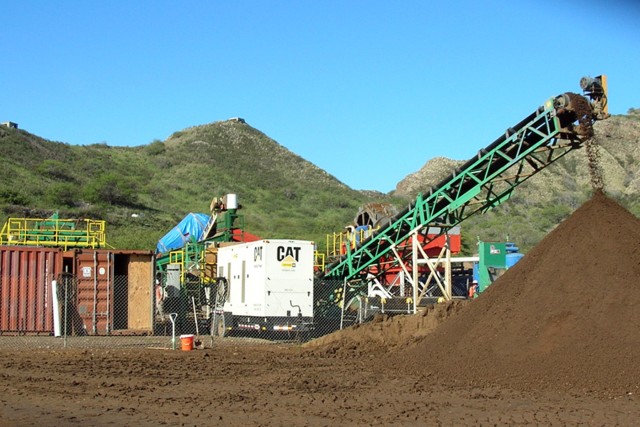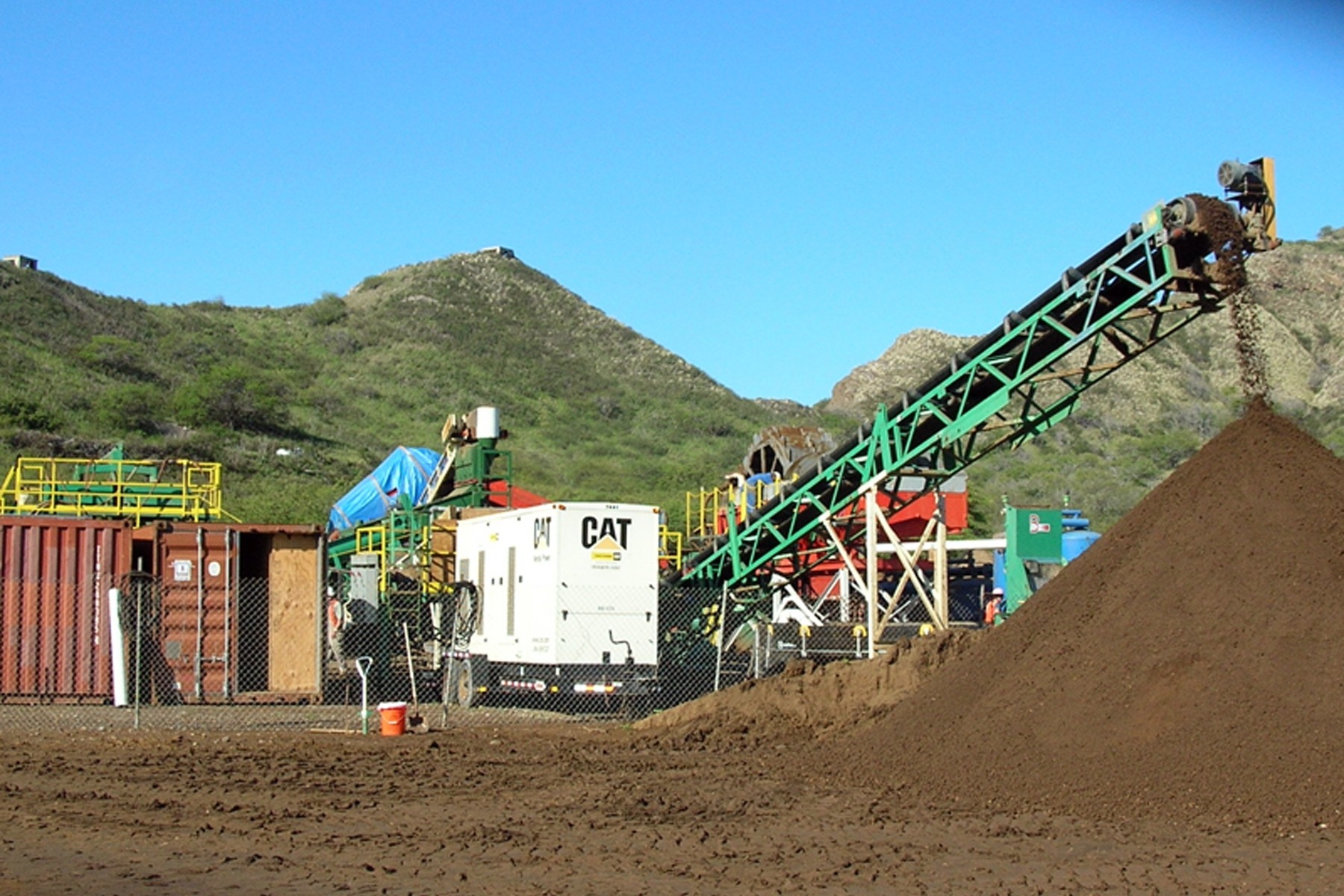<i>Aberdeen Proving Ground, Md.--</i> For its efforts to restore Diamond Head Crater to a more pristine natural condition, the Hawaii Army National Guard (HIARNG) at Fort Ruger will receive the Army's highest honor in environmental stewardship - the Secretary of the Army Environmental Award. The award will be conferred at a ceremony at the State Department of Defense on April 17th.
With exceptional planning and management, the HIARNG took only months (January to May) to reclaim the soil and restore a significant portion of Diamond Head Crater.
For decades, Diamond Head Crater has been the first natural feature that seven million visitors per year see on approach to the Hawaiian Islands, via ship or airplane. Located in Honolulu and part of Fort Ruger since 1909, the Diamond Head military complex was used by the U.S. Army and the HIARNG for pistol and rifle training from the 1930s to the mid 1960s. Over the decades this training had resulted in tons of ammunition fragments to be deposited in the soil of the firing ranges. Ft. Ruger was transferred to Hawaii National Guard control in 1950.
In a concerted effort to leave Diamond Head in better condition than when it was given to the U.S. Army, the Hawaii Army National Guard undertook a comprehensive cleanup program for Diamond Head as part of the state monument restoration act of 1979. In a matter of months, and without once closing the park to the public, the Hawaii Army National Guard Diamond Head restoration staff removed and recycled over 14 tons of particulate metal and cleaned 30,000 tons of soil using a soil washing machine powerful enough to thoroughly wash soil after only one pass through the system.
"The soil washing equipment our team used was extremely efficient," said Cpt. Charles J. K. Neumann, Environmental Officer. "Our equipment reduced our need to tap into fresh water resources because it actually recycled the water and reused it over and over again throughout the whole project."
Invasive plant species at Diamond Head were also removed to promote native vegetation growth. Because using prescribed burn techniques to control the invasive plants is forbidden in the area, the Guard restoration staff manually dug up the offensive plants so as not to impose impacts on the environment by using chemical pesticide sprays.
The community surrounding Diamond Head Crater never had to worry about the restoration project impeding on their daily lives because the Guard restoration staff worked directly with Diamond Head neighbors to accomplish the cleanup with minimized traffic, noise, and dust.
<i>This information is provided by the U.S. Army Environmental Command. USAEC is the Army's point organization for supporting the implementation of environmental programs that facilitate sustainable Army training and operations while protecting the environment. We provide environmental program management and technical support products and services in support of Army training operations, acquisition and sound stewardship.</i>
<center>"Sustaining the Environment for a Secure Future"</center>




Social Sharing